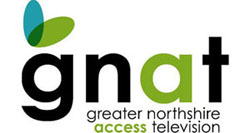New Battenkill project underway

Press release submitted by Battenkill Watershed Alliance
ARLINGTON — The Batten Kill Watershed Alliance and its state and federal partners have begun another phase of the ongoing trout habitat improvement projects in the Batten Kill in West Arlington. The project will also protect the bank of the West Arlington Cemetery and the embankment of
River Road.
The project was designed by Green Mountain National Forest (GMNF) fisheries biologists under the guidance of Vermont Fish & Wildlife Department fisheries biologist Ken Cox. The work is funded by GMNF, the Trout & Salmon Foundation, and the members of BKWA.
The section of the river in question begins a short distance downstream of the West Arlington Covered Bridge at Rte. 313 West and continues down around a big bend to where the Batten Kill comes up against River Road. The primary goal of the project is to improve trout habitat by installing
structures of wood and stone to provide cover and shelter, which is lacking in the Batten Kill. But a secondary goal of this particular project is to protect private and public property from erosion. It is very important to protect the steep high bank of the West Arlington Cemetery from possible future erosion and collapse. There are graves very close to the top of the bank, and there is already some erosion.
“During Tropical Storm Irene there was significant damage to other cemeteries in Vermont – in some cases banks eroded and collapsed, and caskets were actually washed away,”BKWA Executive Director Cynthia Browning said. “We are taking steps to try to prevent this from happening in Arlington. I was very concerned when that Hurricane Hermine looked like coming up towards us last week in case it came here and flooding stopped the project work and then caused the erosion we were planning to prevent. I am so relieved that this did not happen.”
At the downstream end of the project an eroding bank will be stabilized with a wood and stone structure for a private landowner, and this will also protect the embankment for River Road from erosion.
The installation of cover and shelter structures is important because the Batten Kill has not provided enough of this habitat 
condition in recent years. Small to medium sized trout need protection from predators, from flooding, from ice, and from hot weather. Such protection is provided by
overhanging trees, undercut banks, deep pools, large stones, and fallen trees and branches in the river. Since there are not enough of these features currently, the installation of the cover and shelter structures along Cemetery Run will jumpstart the productivity of the fishery here.
Similar projects upstream and downstream have been proven to increase the carrying capacity of the river by up to 500% in some sections. One kind of
structure called a “convoy” is to take several whole trees, sink them in a pool, and weight them down with slate and boulders. This provides a lot of
protection and good feeding stations for the trout.
In the long run the key to a productive wild trout fishery will be to keep many trees on the banks that eventually get big, get old, and fall into
the river to provide the wood that the trout habitat needs.
The alliance has already completed a different trout habitat improvement project in Shushan, N.Y., this year.


